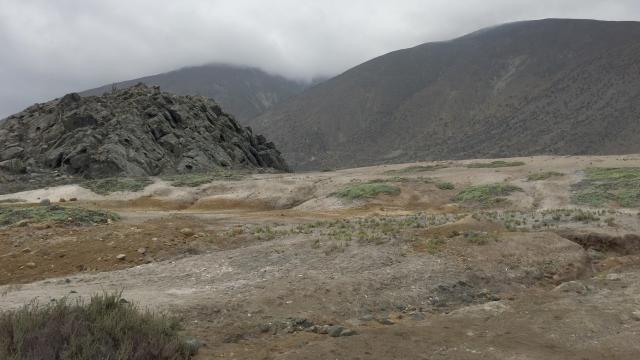New archaeological and geological evidence points to an ancient earthquake that devastated populations along a 998 km-long stretch of the South American coastline some 3,800 years ago. But the evidence also suggests that the affected communities found ways to cope.
The authors of the new Science Advances paper, led by anthropologist Diego Salazar from the University of Chile, present evidence for a 9.5 magnitude earthquake along the major northern Chile seismic gap, which in turn generated large and destructive tsunamis. For the people living along the arid coastal Atacama desert at the time, this natural disaster caused “exceptional social disruption,” the scientists write, and inspired resilient coping strategies along the coast.
“This new knowledge needs to be included in future seismic and tsunami hazard assessments in the region and also the entire Pacific basin,” Gabriel Easton, a co-author of the study and a geologist at the University of Chile, told me in an email. The new finding hints at the “possibility of very large earthquakes in subduction zones around the world, with potential social consequences,” he added.
The megathrust earthquake and associated tsunami must’ve been awful. By comparison, the 2004 Indian Ocean earthquake and the 1,824 Tōhoku earthquake both registered at M9.1, and both spawned catastrophic tsunamis. Only two other known earthquakes, the 1960 Chilean earthquake at M9.5 and 1964 Alaska earthquake at M9.2, come close.
The coastal Atacama desert is susceptible to super-powerful earthquakes owing to the subduction contact of the Nazca and South American plates. Easton said these plates converge at a rate of 6.5 millimetres each year, causing subduction quakes (when one plate is shoved beneath another) to occur, including an M8.8 earthquake that struck this exact region in 1877. The hypothesised earthquake from 3,800 years ago was the result of a 1,030 km-long (1,000-kilometre) rupture.
The Atacama desert has been home to humans for thousands of years. Indigenous people from this part of Chile are referred to as the Changos, so it’s “possible to say that the predecessors of the Changos were living along these coasts at the time of the occurrence of the very large earthquake and tsunami that we discovered,” Easton said.
The findings in new study were driven by both geological and archaeological evidence. The team radiocarbon-dated uplifted littoral deposits — sections of the ancient seafloor covered in shells — at seven locations, establishing an age of around 3,800 years. Analysis of ancient tsunami deposits yielded a similar result. They also found a similarly-aged crack, which affected archaeological layers at the San Ramón mine in the Taltal region.
“In archaeological sites, especially at the Zapatero site in the Taltal area, we found systematic and conspicuous cultural changes evidenced by the archaeological units,” Easton explained. “Archaeological evidence includes a change in the position of the cemeteries along the entire region, which were located closer to the coastline before around 3,800 years ago and systematically far away from it after this date.”
In total, the team documented buildings at five different sites, all from this period, that were either destroyed or eroded, the latter being a sign of abandonment. Extensive activities at a mine ground to halt, human activities in general were reduced, and sites in this area became less populated after the presumed disaster.
The hunter-gatherer-fishers who lived in the Atacama desert were clearly affected, but they weren’t helpless, with archaeological evidence showing them to be particularly resilient. Resilience here means “the capacity of human communities to absorb changes occurring after a socioenvironmental disturbance, allowing for their long-term adaptation,” write the scientists in their study. “In this sense, human societies follow different historical resilience trajectories, in contrast to the ‘return to the preshock state’ that characterises resilient behaviour in noncultural communities.”
The people who remained along the coast after the earthquake and tsunami appear to have moved their settlements to higher ground, but they continued to use the lower locations for task-specific purposes, such as fishing, according to the paper. The habitations at the higher locations persisted for quite some time, lasting until at least 500 to 700 CE.
“I think these are the most evident resilience strategies employed,” Salazar wrote to me in an email. He noted that these people retained insights into their environment, as well as their technologies — so despite having fewer people than before the disaster, they still managed to exploit the same resources and in the same manner.
It’s difficult to know if oral accounts or traditions forged by the disaster persisted for so long. Regardless, the paper says that the findings “demonstrate that long temporal scales must be considered to adequately assess the magnitude, frequency, and sources of these events and that understanding the different trajectories followed by human societies to face these socio-natural disasters may teach us how to address them in the future.”
Indeed, there’s an important lesson here. Super-powerful earthquakes occur at frequencies of thousands of years, but that doesn’t mean we should put off planning for them. The scientists say the Chilean and Peruvian coasts are clearly vulnerable, and our hazard assessment policies should be adjusted accordingly.
